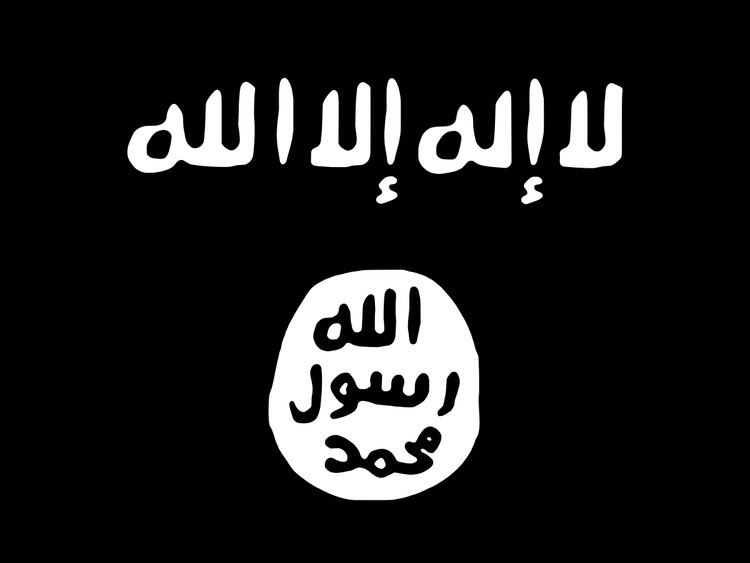 | ||
Active 26 January 2015–present Ideology Salafist Islamism
Salafist Jihadism Leaders Abu Bakr al-Baghdadi (Leader of ISIL), Hafiz Saeed Khan † Area of operations Afghanistan, Pakistan, India, Bangladesh. Strength 2,500 (Sep 2015)
1,000 (Dec 2016) Part of Islamic State of Iraq and the Levant | ||
The Islamic State of Iraq and the Levant – Khorasan Province (Arabic: الدولة الإسلامية في العراق والشام – ولاية خراسان, ad-Dawlah al-Islāmiyah fī 'l-ʿIrāq wa-sh-Shām – Wilayah Khorasan), or ISIL-KP, is a branch of the militant Islamist group Islamic State of Iraq and the Levant (ISIL), active in Afghanistan and Pakistan. The Khorasan group's area of operations also includes other parts of South Asia, such as India where individuals have pledged allegiance to it.
Contents
ISIL announced the group's formation in January 2015 and appointed former Tehrik-i-Taliban Pakistan militant Hafiz Saeed Khan as its leader, with former Afghan Taliban commander Abdul Rauf Aliza appointed as deputy leader. Aliza was killed in a U.S. drone strike in February 2015, while Khan was killed in a U.S. airstrike in July 2016. Its current leader is unknown.
Background
Around September 2014, ISIL sent representatives to Pakistan to meet with local militants, including some Tehrik-i-Taliban Pakistan (TTP) factions, following several months of discussions. At the same time, leaflets, flags and propaganda materials in support of ISIL began being distributed in parts of Pakistan, including a pamphlet written in Pashto and Dari that called on all Muslims to swear allegiance to Abu Bakr al-Baghdadi. The leaflets were believed to have been produced and distributed from across the border in Afghanistan. In October 2014, former Taliban commander Abdul Rauf Khadim visited Iraq, later returning to Afghanistan where he recruited followers in Helmand and Farah provinces. In the same month, 6 TTP commanders in Pakistan; Hafiz Khan Saeed, official spokesman Shahidullah Shahid, and the TTP commanders of Kurram and Khyber tribal regions and Peshawar and Hangu Districts, publicly defected from the TTP and pledged allegiance to Abu Bakr al-Baghdadi.
On 10 January 2015, these six individuals appeared in a video where they again pledged allegiance to al-Baghdadi and nominated Hafiz Saeed Khan as the leader of their group. They were joined by other mid-level militant commanders, including representatives from Afghanistan’s Logar and Kunar Province and Pakistan's Lakki Marwat. Shahidullah Shahid claimed that other Jihadists from both countries supported the pledge of allegiance but had been unable to attend the meeting in person.
History
On 26 January 2015, ISIL's official spokesman Abu Muhammad al-Adnani released an audio statement in which he accepted the earlier pledge of allegiance and announced the expansion of ISIL's caliphate with the creation of Wilayat Khorasan (Khurasan Province), a historical region incorporating parts of modern-day Afghanistan and Pakistan. Hafiz Khan Saeed was appointed as its local leader, or Wāli (Governor). Abdul Rauf was named as Khan's deputy, however he was killed by a US drone strike in Afghanistan several weeks later.
ISIL began actively recruiting defectors from the Taliban, particularly among those who were disgruntled with their leaders or lack of battlefield success. This prompted senior Taliban leader Akhtar Mansour to write a letter addressed to Abu Bakr al-Baghdadi, asking for the recruitment in Afghanistan to stop and arguing that the war in Afghanistan should be under the Taliban leadership. Nevertheless, fighting between the two groups broke out in Nangarhar Province, and by June 2015 ISIL had been able to seize territory in Afghanistan for the first time. After successfully driving the Taliban out of several districts of Nangarhar after months of clashes, the group started carrying out their first attacks against Afghan forces in the province. Khorasan Province also developed a presence in other provinces, including Helmand and Farah. In late 2015, ISIL began broadcasting Pashto language radio in Nangarhar Province, later adding content in Dari.
The group was boosted in August 2015 when the Afghanistan-based militant group, the Islamic Movement of Uzbekistan (IMU), pledged allegiance to ISIL and declared they were now members of Wilayah Khorasan. Clashes broke out between the IMU and the Taliban in Zabul province following this pledge. The Taliban launched an offensive against the Uzbeks, causing heavy casualties and eliminating its presence in the province by the end of the year. The Taliban also succeeded in dislodging ISIL from Farah province over the same period.
The group suffered further reversals in 2016, losing control of much of its territory in Nangarhar province. It was driven out of Achin and Shinwar Districts following a military operation by Afghan Security Forces, while clashes with the Taliban led to them being driven out of Batikot and Chaparhar districts. Following the loosening of targeting restrictions by US Forces in Afghanistan earlier in the year, the US Air Force began conducting scores of air strikes against ISIL targets. In April 2016 the Taliban reported that a number of senior and mid-level leaders of Wilayah Khorasan in Nangarhar Province had defected from ISIL and pledged allegiance to Taliban leader Akhtar Mansour. The defectors included members of the group's central council, judicial council, and prisoners council, as well as several field commanders and their fighters.
As of this time, they control several districts in southeast Afghanistan, with cells ambushing Afghan government forces, local warlords and Taliban patrols while avoiding open warfare. They have ambushed and killed several Red Crescent staff and Afghan Police and tribal militia in an ambush.
Analysis
According to a UN report, up to 70 ISIL fighters arrived from Iraq and Syria to form the core of the group in Afghanistan. Alongside foreign fighters from Pakistan and Uzbekistan, most of the group's membership growth has come from recruiting Afghan defectors from the Taliban. US General Sean Swindell told the BBC that members of Khorasan Province are in contact with ISIL's central leadership in Syria, although the exact relationship between the two is unclear.
While the group has managed to establish a foothold in Afghanistan, it has had less success in Pakistan, largely carrying out isolated, small scale attacks.
